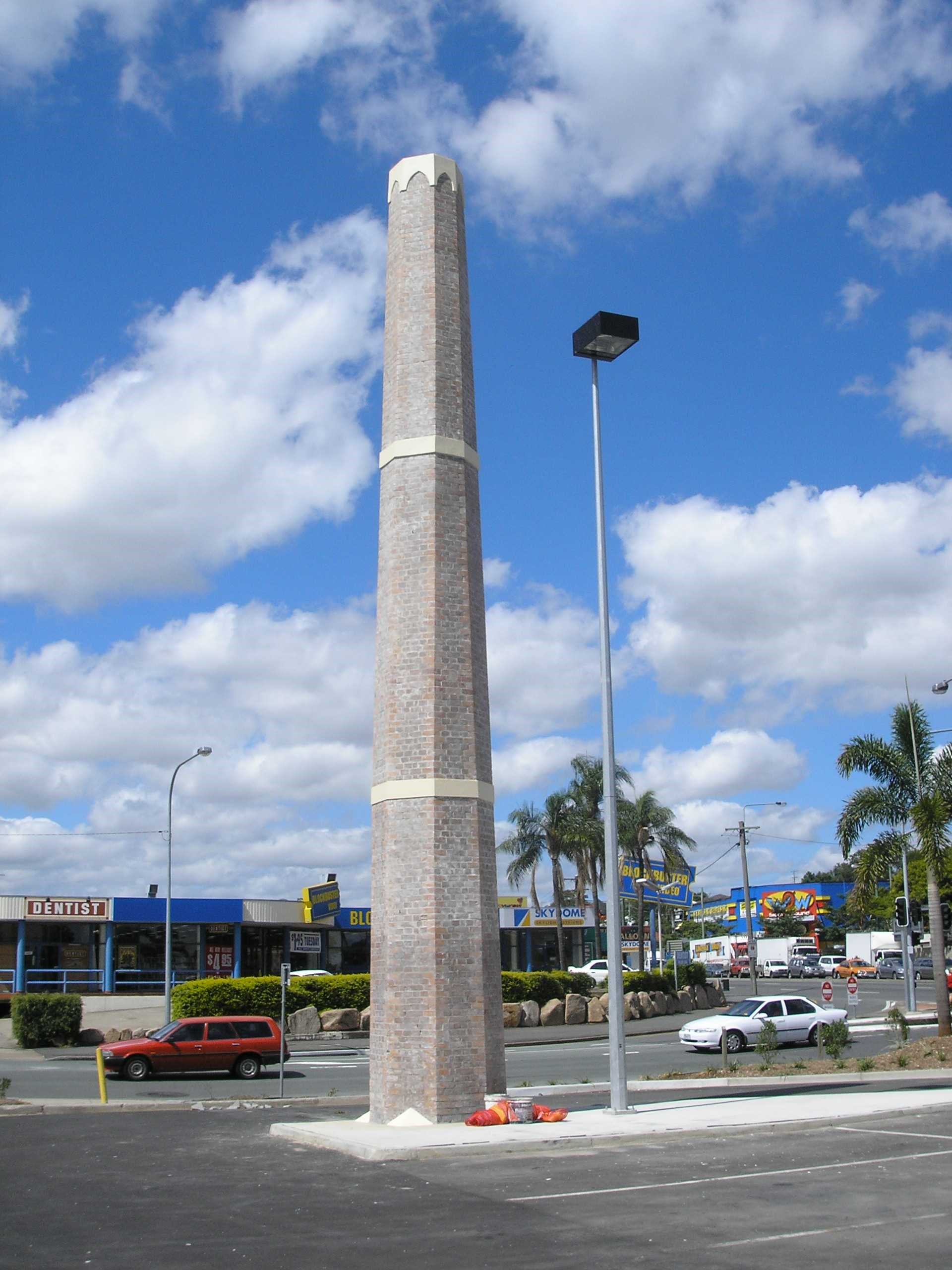Addresses
Type of place
Ventilation shaft
Period
Federation 1890-1914
Style
Free Classical
Addresses
Type of place
Ventilation shaft
Period
Federation 1890-1914
Style
Free Classical
This ventilation shaft was constructed in 1913 by the South Brisbane Town Council as a component of its Ipswich Road stormwater catchment system. Building this system was a significant engineering feat as it comprised a series of brick drains and traps that stretched from Chardon’s Corner to Buranda and into Kingfisher Creek. The Buranda Ventilation Shaft is the only brick ventilation shaft of the several built for this drainage system and is valuable for the evidence it provides of early twentieth century sewerage engineering.
Lot plan
L4_RP158152
Key dates
Local Heritage Place Since —
Date of Citation —
Construction
Structure: Face brickPeople/associations
James S. Louttit (Engineer);South Brisbane Town Council (Builder)
Criterion for listing
(A) Historical; (B) Rarity; (C) Scientific; (D) Representative; (F) TechnicalInteractive mapping
Lot plan
L4_RP158152
Key dates
Local Heritage Place Since —
Date of Citation —
Construction
Structure: Face brickPeople/associations
James S. Louttit (Engineer);South Brisbane Town Council (Builder)
Criterion for listing
(A) Historical; (B) Rarity; (C) Scientific; (D) Representative; (F) TechnicalInteractive mapping
History
Before a sewerage system was constructed for Brisbane, all residential and commercial effluent was disposed of through a system of both open and underground stormwater drains. The run off of laundry, bath and kitchen water would pour into these stormwater drains which would only be flushed when rainwater entered the system via building downpipes, street gutters and roadside gullies. The spots where the rainwater entered the sewers from the gullies and gutters were known as gully traps. This was a fitted trap over the stormwater drain, which was designed to trap any noxious vapours so that they did not affect the public’s health. Such traps had become a requirement under the 1900 Health Act.
The Buranda Ventilation Shaft was constructed over the main Ipswich Road catchment stormwater drain in 1913. The brick shaft was designed by South Brisbane Council’s City Engineer, James S. Louttit on 19 July 1912 and the construction contract was awarded to builder Enos Williams. At the time of its construction, the Ipswich Road catchment was one of the largest suburban drainage systems in Brisbane, running underground for several kilometres all the way to Chardon’s Corner, where Ipswich Road and Cracknell Road intersect. Using a series of brick drains, the catchment discharged into Kingfisher Creek and the whole system was described as “monumental in concept”.
The placing of the Buranda Ventilation Shaft was as a direct result of the operations of the Diamantina Hospital, which was located across Ipswich Road at the site now occupied by the Princess Alexandra Hospital. The shaft was placed astride flaps, which were designed to close the underground drain and so prevent a spillage of effluent onto Ipswich Road and surrounding properties. This sealing of the drain at this spot would have been considered a public health priority given that the drain serviced the nearby hospital. Complaints about what the Diamantina Hospital may have been placing in the catchment system may have further prompted the call for a ventilation shaft to be erected over the flaps. Brick ventilation shafts were unusual in Brisbane. None were erected on the Brisbane’s northside and only two such shafts were built on the southside. The other brick ventilation shaft that was erected by the South Brisbane Town Council was placed in Colin Street, South Brisbane but it has since been demolished.
The Buranda Ventilation Shaft became the responsibility of the Brisbane City Council when the South Brisbane Council ceased to exist in 1925. The shaft was located on land that was largely used as a tramway depot. When the trams stopped running in 1969, the entire tramway site was put up for redevelopment. By 1977, the site had been sold by the Council to the State Government Insurance Office and while the shaft site was retained by the Council as ‘Easement A’, the shaft itself had long since ceased to have any operational use. When the planning of the Buranda Shopping Centre commenced, the centre’s developer requested the demolition of the ventilation shaft. But on the advice of four City Engineers, the Council refused to permit the destruction of the shaft thereby ensuring that “a truly unique and unusual hydraulic structure was preserved for posterity”.
Description
This vent is a brick stack erected over the Ipswich Road catchment stormwater drain. The 15.3 metre high vent sits over flaps that seal off the underground stormwater drain. The tapered vent is octagonal in cross-section with a square base and a narrow decorative ‘vent’ at the top. Regular bands in raised brick decorate the surface of its shaft.
Statement of significance
Relevant assessment criteria
This is a place of local heritage significance and meets one or more of the local heritage criteria under the Heritage planning scheme policy of the Brisbane City Plan 2014. It is significant because:
References
-
Brisbane City Council Water Supply and Sewerage Detail Plans
-
Department of Natural Resources, Queensland Certificates of Title and other records
-
JOL Estate Map Collection and photographic collection
-
Lawson, Ronald 1973, Brisbane in the 1890s: A Study of an Australian Urban Society, University of Queensland Press, St. Lucia
-
McKellar's Map of Brisbane and Suburbs. Brisbane: Surveyor-General’s Office, 1895
-
Oliver, C.A.H. (Bill), Hydraulic Structures as Part of the Heritage Environment, paper presented to the 1994
-
Oliver, C.A.H. (Bill), notes of telephone conversation with Jack Ford, 27 February 2001
-
International Conference on Hydraulics in Civil Engineering, (Brisbane: University of Queensland, 1994)
Citation prepared by — Brisbane City Council (page revised September 2020)

